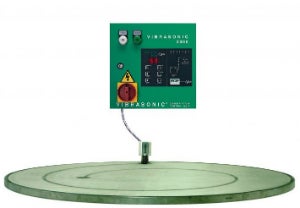
Screen blocking or blinding is a common problem when sieving fine pharmaceutical powders on screens of 300 microns and below.
It occurs when one or a combination of particles sits on or in an aperture of the mesh and stays there, preventing other particles from passing through these openings.
It is particularly common with powders that are sticky or contain a lot of particles that are similar in size to the mesh apertures.
When blinding occurs, the useful screening area and the screens overall capacity are reduced, slowing down production levels.
An ultrasonic deblinding system can eliminate all these problems. In ultrasonic deblinding, an ultrasonic frequency is applied to the sieve mesh using an acoustically developed transducer.
The frequency breaks down the surface tension, making the stainless steel wires friction-free and preventing pharmaceutical particles that are slightly greater and smaller than the mesh from blinding or blocking the screen mesh.
This technical article takes an in-depth look at screen blocking or blinding and how it can impact on the production process.
Case studies highlight how the Vibrasonic deblinding system from Russell Finex has successfully eliminated screen blocking or blinding, revolutionising the screening of fine powder.
